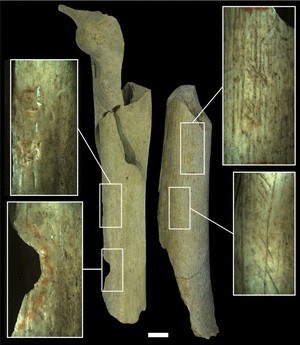In a new study, scientists reveal how Neanderthals who lived in Belgium are already practicing cannibalism, some 40,000 years ago. Skeletal evidence revealed some marks that include telltale signs of butchery, which suggests that Neanderthals not only have eaten fellow humans but they even used specialized tools made from human bones.
Neanderthals thrived in western Asia and Europe for thousands of years as a subhuman group where they disappeared some 30,000 to 40,000 years ago. During the arrival of Homo sapiens, which are modern humans' ancestors, Neanderthals were thought to slowly become extinct during this time.
Recent studies also suggested that Homo sapiens and Neanderthals have interbred where four percent of modern human DNA of Asians and Europeans originated from this group, leading to a change in the human immune system and metabolic processes.
In this new study, scientists have uncovered skeletal evidence from the Goyet caves in Namur, Belgium where the bones revealed pits and cut marks along with notches, which are suggestive of butchery. Apart from this, gruesome evidence also reveals how the bone marrow was carved out and extracted, along with skinning from the bone.
According to Herve Bocherens of the University of Tubingen in Germany, this evidence indicated that Neanderthals most likely practiced cannibalism, as many remains of horses and reindeer are also uncovered and processed in the same manner.
The emergence of Neanderthal cannibalism was first thought to begin in France and Spain however, four human bones in Goyet were considered as evidence that Neanderthals not only had human flesh as part of their diet but they also fashioned tools from these remains. Three shin bones and a thigh bone were used to also shape these stone implements where animal bones were used as knapping tools.
These new findings can provide a better understanding of how late Neanderthals handled their dead, until they all became extinct. Bocherens adds, these significant differences when it comes to subhuman behavior of those living in Europe and Asia can provide more clues about the different social and cultural exchange of these different Neanderthal groups, before they have completely disappeared upon interacting with modern humans.
This new study is published in the journal Nature Scientific Reports.



























